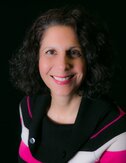 Can I crunch again?
These are common questions I get from my clients every day. The answers are different for everyone depending on the issues they have within their Deep Core System. Some of the more common problems that can occur after having a baby are a weakening or stretching of the abdominal wall connective tissue causing a separation of the outermost abdominal muscle (Diastasis recti), urinary incontinence, pelvic organ prolapse, and other dysfunctions of the pelvic floor muscles from scarring, tightness, or lack of control and coordination. All these problems can be managed, in part by learning how to properly control pressure placed on the abdominal wall or the pelvic floor muscles. What is the Deep Core System anyway? Let' start there. The Deep Core System is a canister of muscles, connective tissue and organs between the rib cage and pelvic girdle. It is a pressurized system that when works together helps to:
Primarily for the purpose of this blog we will discuss the 4 deep core muscles and the skeletal structures to give you a simple understanding. The Diaphragm which is a Dome shaped muscle sits up underneath the rib cage and aids in respiration and is the top of the canister.
The Transverse Abdominus starts at one side of your spine and wraps all the way around the front of your body creating a Corset and attaches on the other side of the spine.
Neutral Alignment is Key The Diaphragm is the top of this tube-shaped canister, the pelvic floor the bottom, the transverse and multifidus the front, sides and back. I personally like to think of it more like an Extra-large plastic Easter egg because lining up the top and bottom keeps all the good stuff inside. These muscles connect the rib cage (top of the egg) to the pelvic girdle (bottom egg) deep inside underneath the exterior core or 6 pack muscles. Traditional core exercises Traditional core work tends to focus on the exterior Core muscles like with crunching, bicycles and any exercise where you are in a flexed and flat backed position. This can increase pressure down into the pelvic floor and increase intra-abdominal pressure. If the pelvic floor muscles are not strong enough to counter act the forces more dysfunction can occur. In addition, the Deep Core system becomes under trained, overlooked and forgotten with traditional fitness style core exercises. Add having a baby or two, gaining weight around the middle and further stretching out that deep core system and making its job twice as hard and often times the hip muscles, exterior core and back muscles start to work overtime and create an imbalance in the system. In a front-loaded position like a plank, if the transverse abdominus muscle isn’t strong enough to compress and hold up the weight of the organs in the presence of a Diastasis recti then more stretching and weakening of the abdominal wall connective tissue can occur. Again, the hips and exterior core may take over to compensate or one might hold their breath which again will increase pressure in the system. So HOW do you get these deep muscles working again?
In Summary The overall answer is everyone is different in whether they will safely be able to return to these exercises and how long it will take them. They may or may not be right for everyone and that is OK.... These are some of the concepts I teach to my patients. Obviously each person’s ability to return to crunching, planks and other exercises that put pressure on the system will depend on their ability to control the pressure and together we find strategies that help you obtain that control, restore core strength and return to being functionally fit.  Author Nadine Adams, MSPT, CPT, is a Pelvic Health Physical Therapist at Peak Physical Therapy in Norwell. www.peaktherapy.com
1 Comment
|
 RSS Feed
RSS Feed